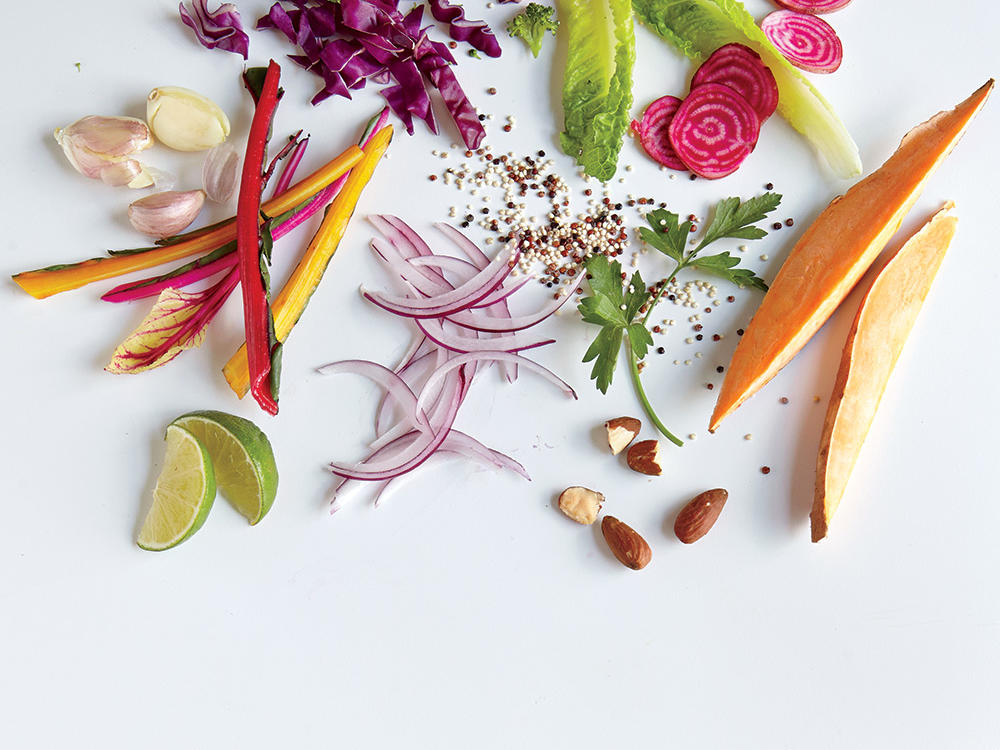7 Ways to Reduce Food Waste
Aug 13, 2017


Vicky Bhogal
Jan 23, 2025 45
Food waste is quite a new phenomenon, and one I don't experience. To me it's because people have lost the ability to truly cook, not just slavishly follow celebrity dinner party recipes. If you really know how to cook you can open your cupboard that's got four things in it and you will make a meal.
For me, the most helpful way to reduce food waste after planning meals better, buying only what you need and not pre-packed if possible is to learn some key cookery techniques that allow you to use leftovers creatively. Here are 7 ways you can make food go further.
1. One of the most fundamental recipes I learned growing up was how to make a pilau, which is a healthy, nutritious, quick all-in-one pan rice meal that you can adapt to whatever you have. For 2 people, simple soak 1 cup basmati rice, drain and rinse, then add to a saute pan in which you have flash-sauteed with a drizzle of oil any spices or fresh or dried herbs of your choice, and any leftover vegetables, shredded chicken, prawns, cooked meats etc. Stir, then add 1 1/3 cup water, bring to the boil, turn the heat very low, cover so the steam is completely sealed and in 10 minutes, it will be ready. My favourite is sliced red onion, cumin seeds, a touch of salt, dried red chilli flakes, halved cherry tomatoes, raw prawns, coriander and leftover nuts like cashews. Or a simple onion, cumin and green pea or spinach leaf version.
2. Buying a mini grinder is a godsend for the kitchen. You can whizz up in seconds a delicious marinade for chicken, prawns and any meats or vegetables by combining a few spoonfuls of leftover natural yoghurt, some fresh garlic, ginger and any spices or herbs you have in your fridge and cupboard, fresh or dried.
3. I love to chop up any leftover vegetables, soften them in a large frying pan, add some herbs and spices, then stir in some beaten eggs to make the most flavoursome quick scrambled eggs or frittata.
4. Make friends with your freezer by freezing leftover meals in portion sizes and clearly labelled. But you can also freeze fruit that has started to get too soft, chop it up or puree it, freeze in lolly moulds or bags, to add to a blender for smoothies, or defrost and heat in a pan as a warm fruit sauce for ice cream. You can also freeze bread and cheese, especially parmesan rinds, which are delicious dropped straight into the pan when making soup, to add flavour.
5. Try not to be a slave to sell-by-dates, but instead go by how the food looks and smells, and its texture. A lot of sell-by dates are overly cautious. So you could be throwing away perfectly good food for no reason!
6. When you have a few lone vegetables in the kitchen, like a wrinkly pepper and a few potatoes, you can make a delicious and filling Sabji dish by finely chopping an onion and clove of garlic, frying in a dash of olive oil until golden, adding a couple of tablespoons of chopped tinned tomatoes, a grating of fresh ginger, some salt, garam masala, and a dash of ground turmeric, adding some chilli if you like. When this mixture has cooked on a low heat for five minutes, add your chopped vegetables, stir to coat, add a dash of water, cover and steam through for 20 minutes or until the vegetables are cooked through, and scatter with come fresh herbs. Serve with rice or scooped up with a bread of your choice.
7. It is well known to save chicken bones for stock but there are other stocks you can make. Keep a ziplock bag in the freezer and keep adding your vegetable scraps every time you cook - think the tops and ends of any root veggies, onions, tomatoes, herb stems, stalks from greens. When it is full and you are ready to use, add to a pan with enough water to cover and simmer for a couple of hours and then strain, for a delicious veggie stock, which you can also freeze. Save your shells from shellfish too, to do the same to make a yummy fish stock.
GOBI DI SABJI goh-bee-dee-sab-jee recipe
Cauliflower Sabji
Serves 4
30g/2 tablespoons butter or 2 tablespoons oil
2 teaspoons cumin seeds
1 onion, finely chopped
1 clove garlic, finely chopped
1 tablespoon grated fresh ginger
2 green chillies, finely chopped
1 teaspoon turmeric
1½ teaspoons salt
1 teaspoon garam masala
1 cauliflower head, cut into florets
A handful of fresh coriander, finely chopped
1. Heat the butter in a large pan you need space so that the vegetables don't get crushed and add the umin seeds. When sizzling, add the onion and, when soft, add the garlic, frying until lightly golden.
2. Remove the pan from the heat for a few seconds and then add the ginger, chillies, turmeric, salt and garam masala. Cook for about 30 seconds on a gentle heat, stirring. Add a splash of water, so nothing sticks.
3. Add the cauliflower and turn up the heat to medium. Stir-fry, coating the cauliflower thoroughly, for a couple of minutes.
4. Add 60ml/¼ cup of water, stir well, cover and steam through on a very low heat for 15-20 minutes, checking occasionally that it is not sticking to the bottom. If so, add a little more water and cover, the steam will lift it off. Scatter with the coriander and top with a knob of extra butter.

Vicky Bhogal


